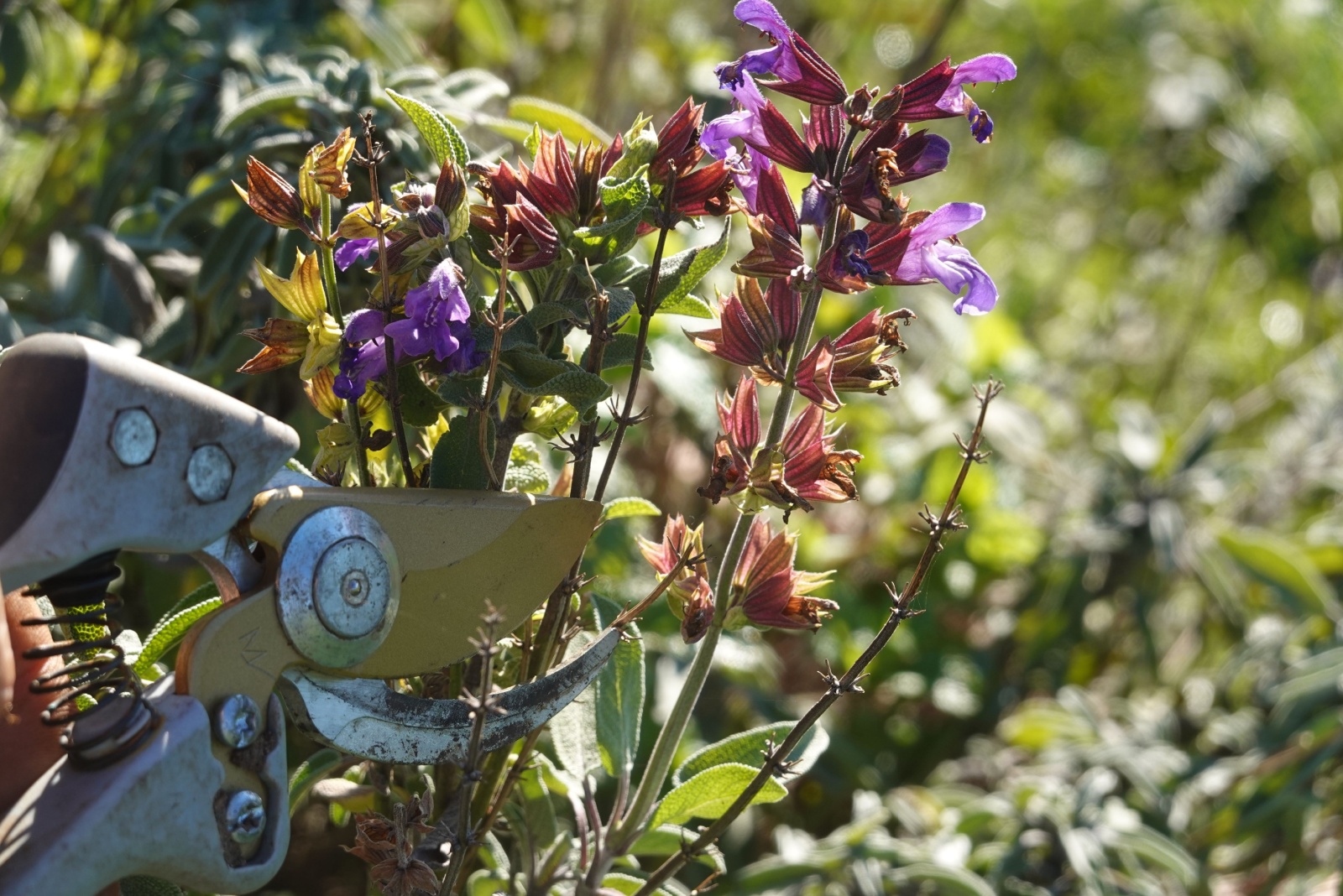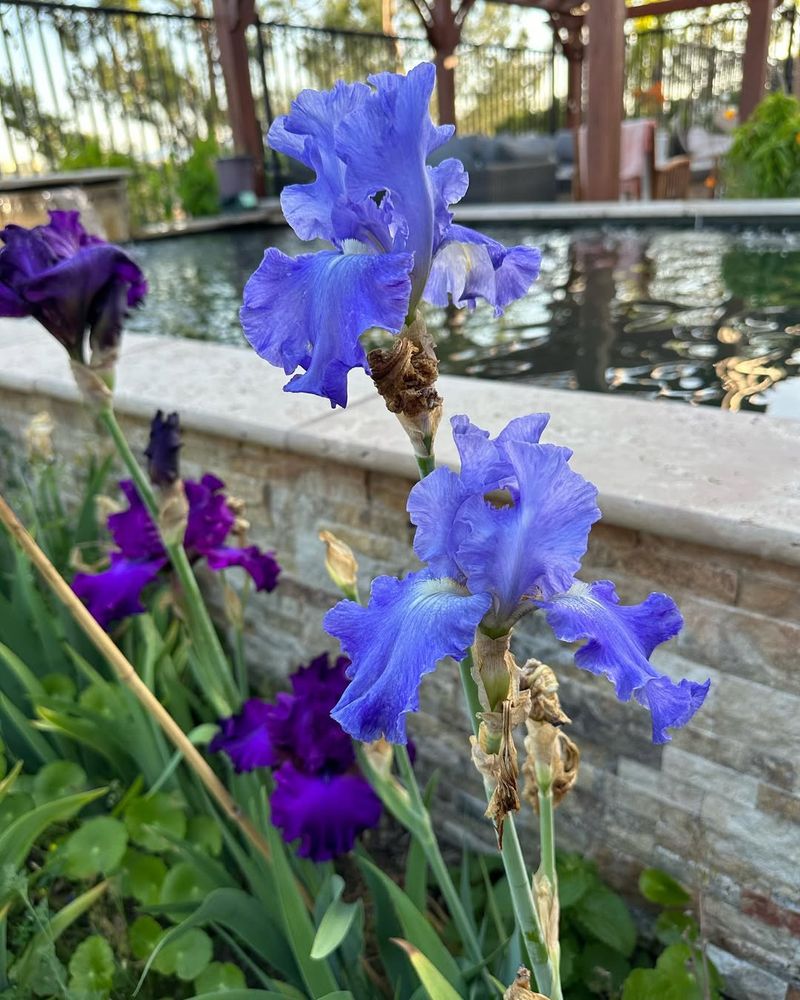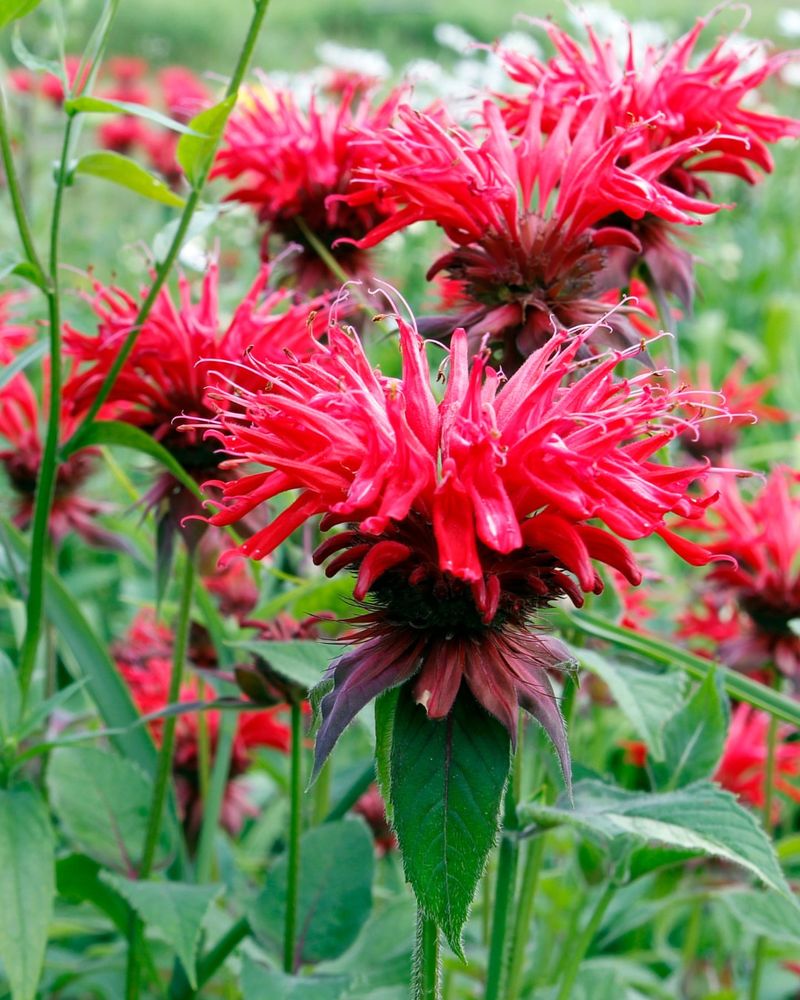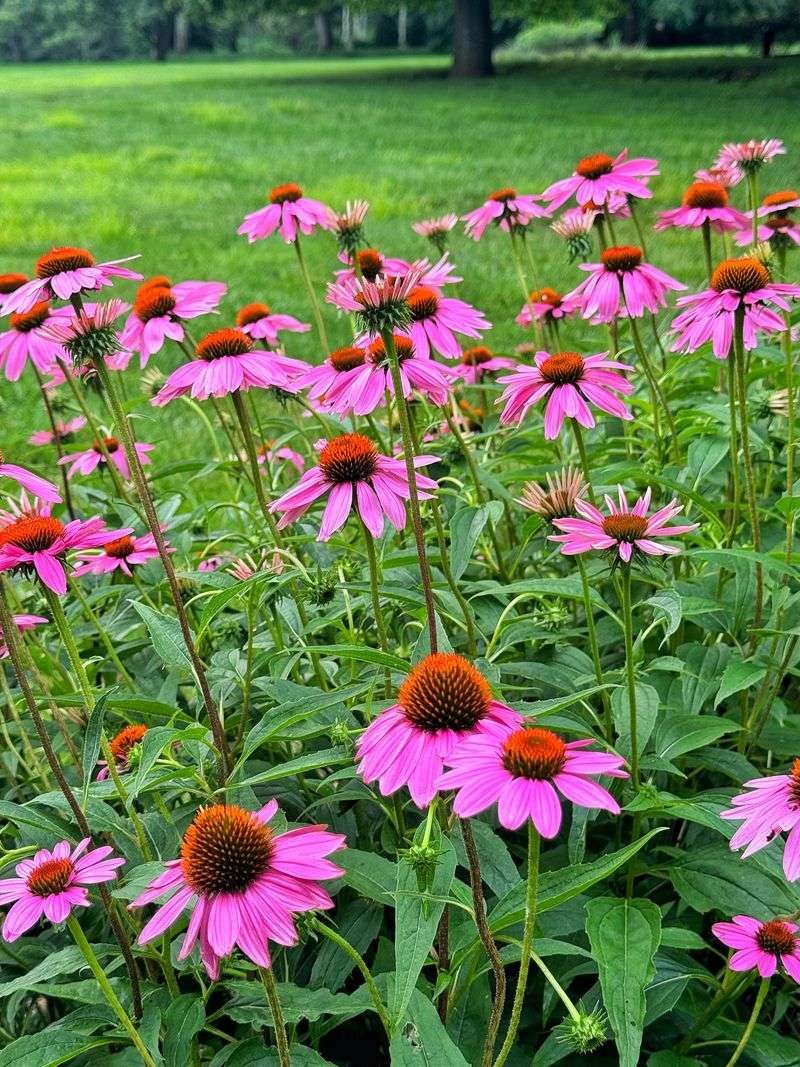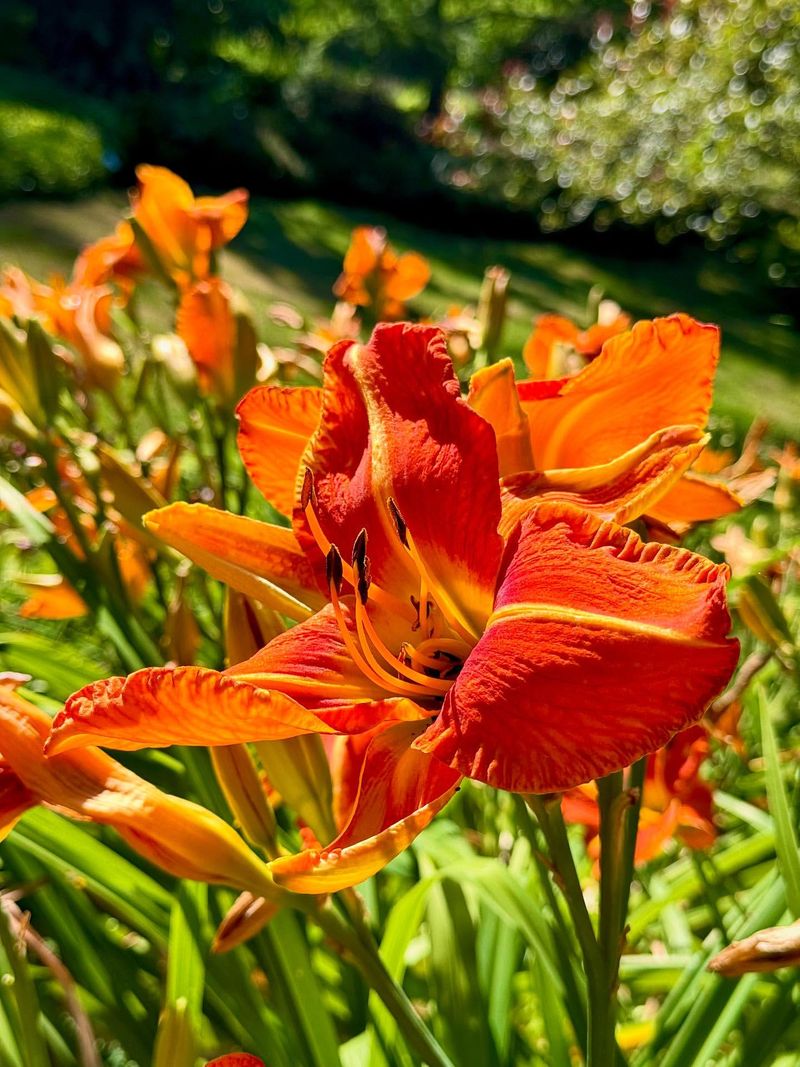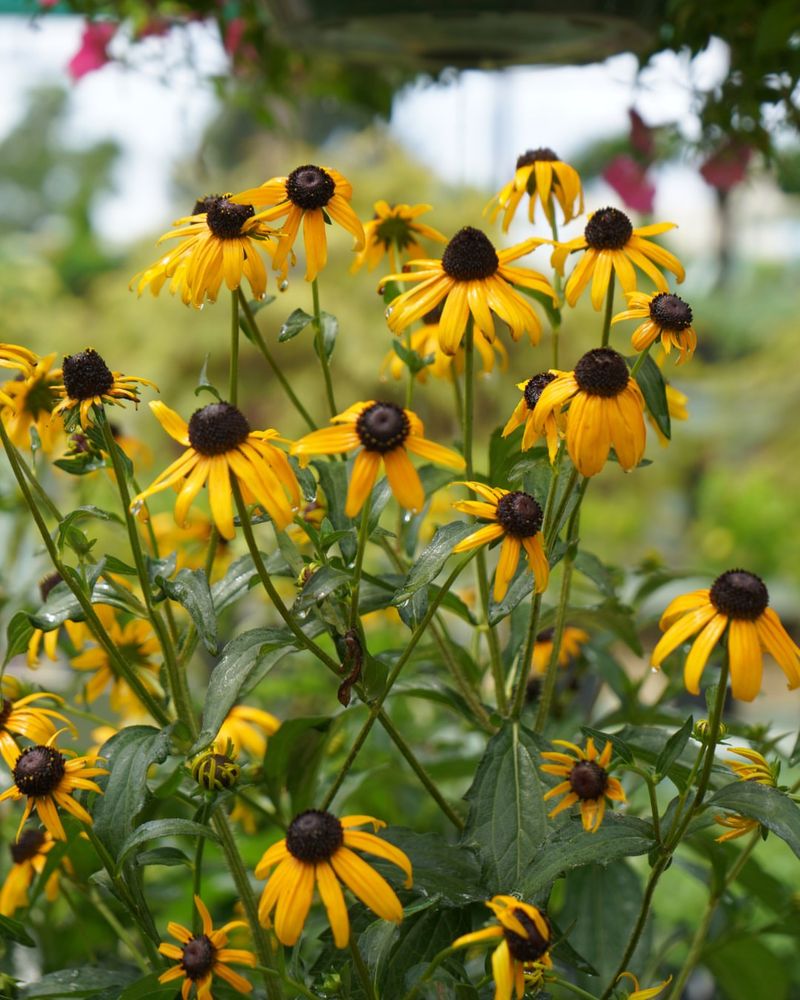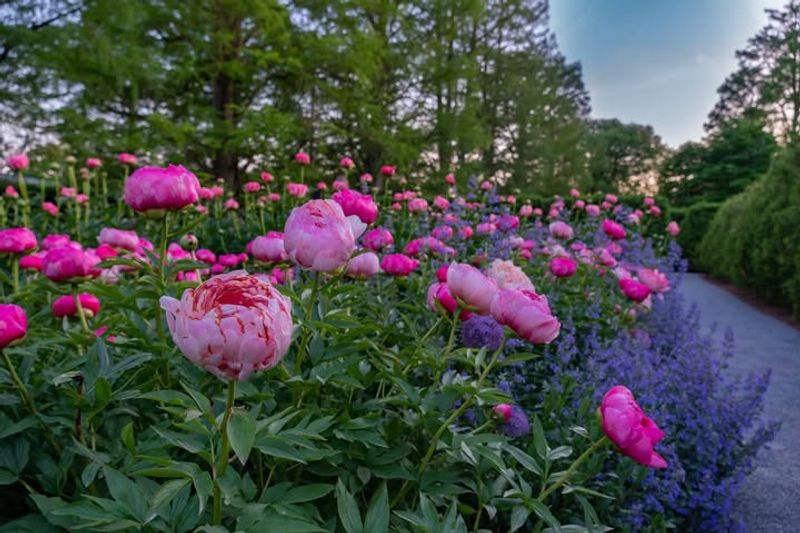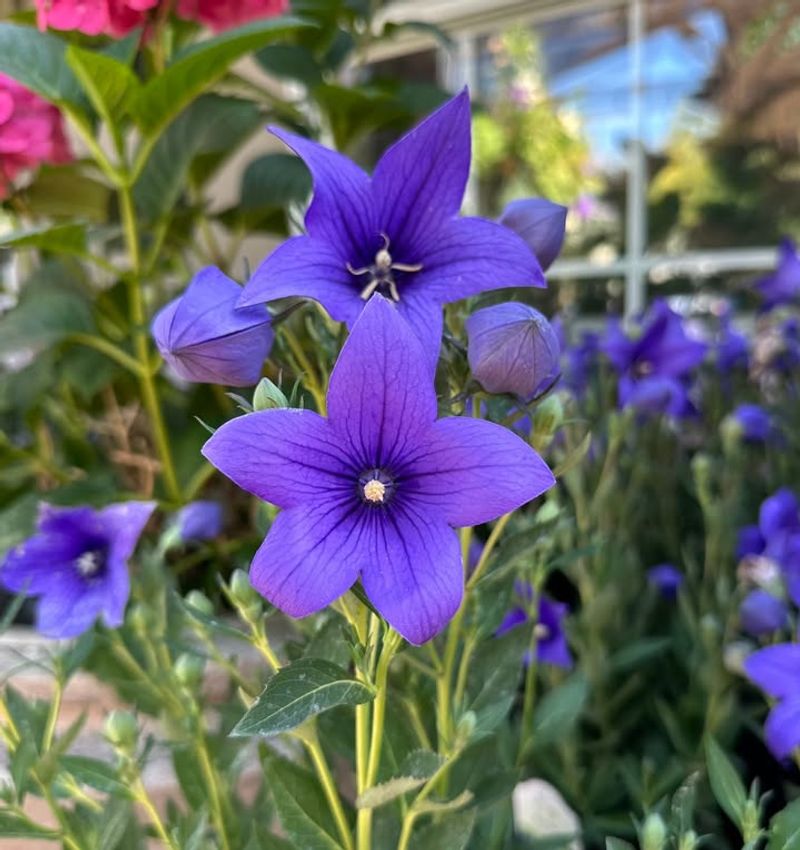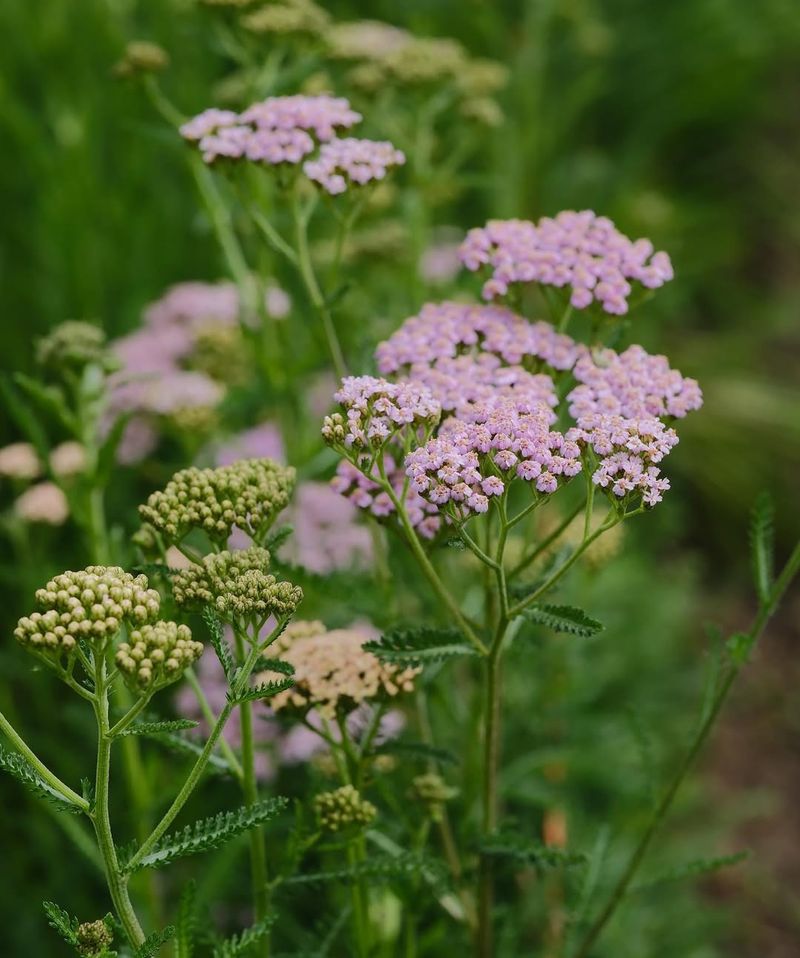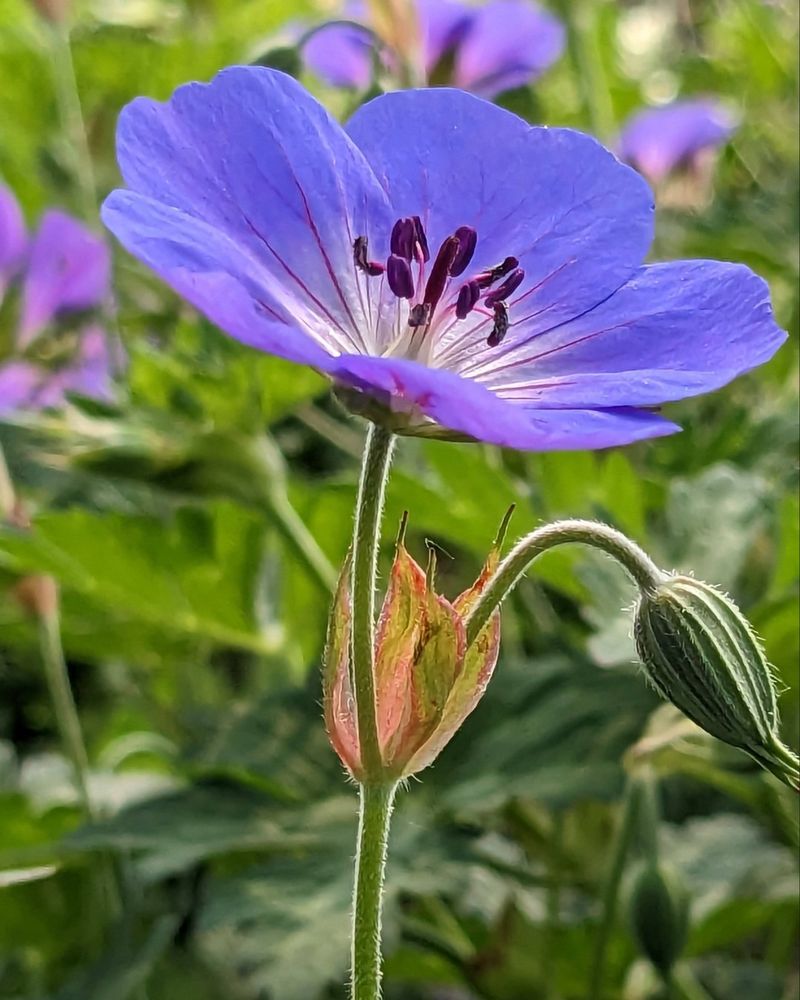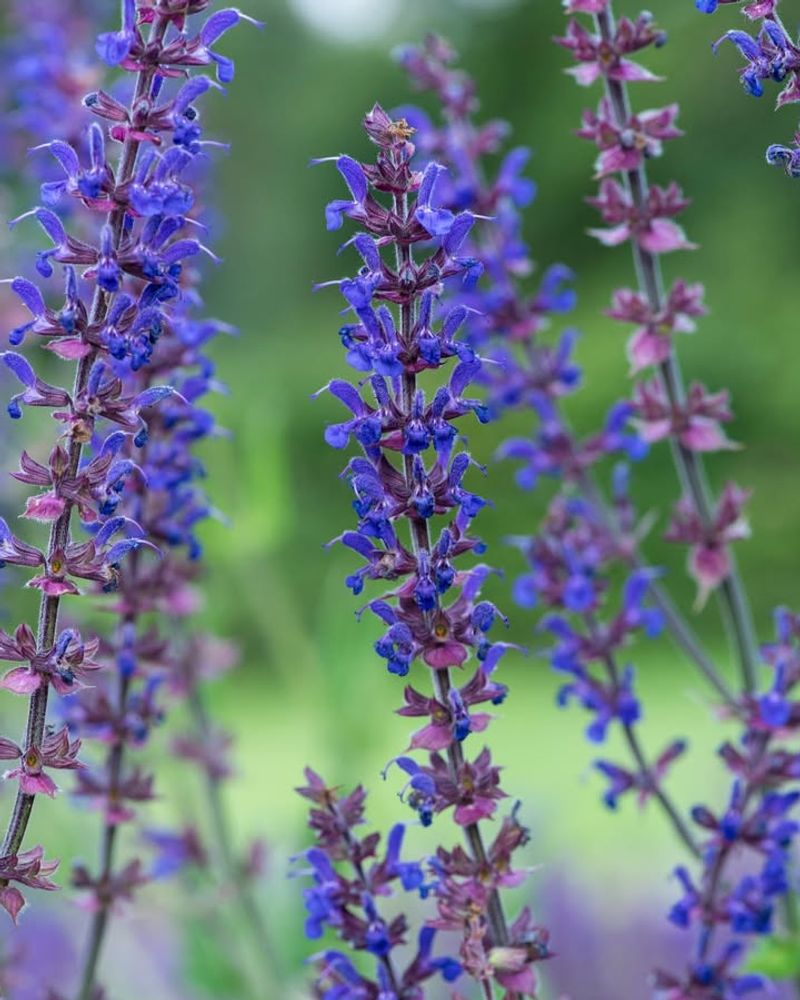Fall yard cleanup is an essential ritual for Ohio gardeners. Proper pruning helps prevent disease, promotes healthy spring growth, and keeps your garden looking tidy through winter.
Taking the time now to cut back certain perennials will reward you with stronger, more vibrant plants when warm weather returns.
1. Bearded Iris
Bearded irises need a good haircut before winter arrives. Cut the fan-shaped foliage down to about 4-6 inches from the ground. This prevents iris borers from overwintering in the leaves.
Removing dead foliage also helps air circulation around the rhizomes, which prevents rot during wet winter months. After cutting back, clear away any debris that could harbor disease or pests.
2. Hostas
Once those first frosts hit, hosta leaves turn to mush. Cut the entire plant down to about 2 inches above soil level using sharp pruning shears. The mushy foliage can become a slugs’ paradise if left intact.
Many gardeners make the mistake of leaving hosta cleanup until spring, but fall cutting prevents disease issues and gives you a head start on spring gardening tasks. Bonus: you’ll avoid the slimy mess of decomposing leaves!
3. Bee Balm
Bee balm stems can become woody and disease-prone if left standing through winter. Trim the entire plant to about 2 inches above the soil line after the first hard frost.
Powdery mildew loves to overwinter on bee balm foliage, so removing it now helps prevent spreading next season. While cutting back, divide overcrowded clumps to improve air circulation – your bee balm will thank you with more abundant blooms next summer.
4. Coneflowers (Echinacea)
Got birds in your Ohio garden? Leave a few seedheads standing as natural bird feeders, but trim most coneflower stems down to 3-4 inches above ground. Birds especially love goldfinches that visit for the seeds.
Removing most of the dead foliage prevents disease issues while still providing some winter interest and wildlife benefits. Come spring cleanup, remove any remaining stems before new growth emerges from the crown.
5. Daylilies
Daylily foliage turns yellow and floppy by late fall, creating perfect hiding spots for slugs and snails. Cut all foliage back to about 3 inches from the ground using clean garden shears.
Remove any dead flower stalks completely to ground level. Fall is also perfect for dividing overcrowded daylily clumps in Ohio gardens– simply dig up, divide with a sharp spade, and replant. Your refreshed daylilies will reward you with more blooms next summer.
6. Black-Eyed Susans
Fall maintenance for Black-Eyed Susans involves a judgment call. Seedheads provide winter food for birds, but can also lead to aggressive self-seeding.
For controlled gardens, cut stems to about 3 inches above ground after frost. In naturalized areas, leave some standing for wildlife and winter interest. Either way, remove any diseased foliage completely and dispose of it (don’t compost!) to prevent spreading leaf spot diseases.
7. Peonies
Peony foliage often develops powdery mildew or botrytis blight by fall. Cut all stems down to ground level and remove every bit of foliage – don’t leave any behind!
Proper fall cleanup prevents disease spores from overwintering and infecting new growth in spring. After cutting back, apply a light 2-inch layer of mulch around plants (but not directly on top of the crown) to protect roots during Ohio’s freezing winter temperatures.
8. Ornamental Grasses
Many gardeners leave ornamental grasses standing for winter interest, but come February, they’re often flattened by snow and ice. Maiden grass, feather reed grass, and switchgrass benefit from fall cutting.
Bundle stems with twine before cutting to make cleanup easier. Use sharp hedge shears to cut to about 6 inches above ground. For larger grasses, a battery-powered hedge trimmer makes quick work of the job while avoiding the backache!
9. Balloon Flower
Balloon flowers develop interesting star-shaped seedheads after blooming. By fall, stems become brittle and prone to breaking in winter storms.
Cut the entire plant back to 2-3 inches above soil level after frost. Mark the location with a small stake – balloon flowers are notoriously late to emerge in spring, and you might accidentally dig in their spot! Remove all debris to prevent crown rot during wet Ohio winters.
10. Yarrow
Yarrow’s ferny foliage turns shabby by fall, but the seedheads provide architectural interest in winter gardens. For neat appearance, cut back to 3 inches from ground after hard frost.
If your yarrow flopped during summer, fall division helps rejuvenate plants. Simply dig up, divide crowns with a sharp knife, and replant. This prevents center die-out and keeps plants vigorous. Remove all cuttings from the garden to prevent potential mildew issues.
11. Hardy Geraniums
Hardy geraniums (not to be confused with annual pelargoniums) often look ragged by fall. Cut back all foliage to ground level after first frost – the crown will remain safely dormant below soil level.
Fall pruning prevents geranium plants from harboring slugs and snails over winter. Some varieties like ‘Rozanne’ may still show green growth after light frosts – wait until after a hard freeze before cutting these back to ensure proper dormancy.
12. Salvia
Salvia stems turn woody by fall and can become catch-alls for blowing leaves and debris. Cut perennial salvias like ‘May Night’ and ‘Caradonna’ to about 2 inches above the ground after hard frost.
Remove all stems and foliage from the garden area. For extra protection in northern Ohio’s harsh winters, apply a light layer of mulch around (not over) the crown after cutting back. Your salvia plants will emerge stronger and more vigorous in spring.

